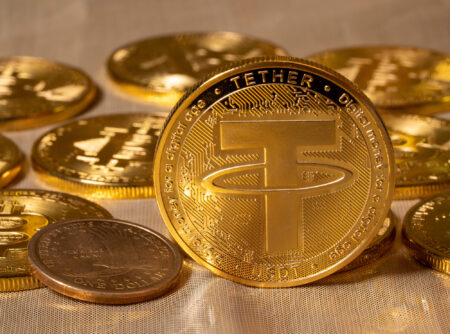What happened this week regarding blockchain and cryptocurrencies? The most relevant local and international events as well as appealing background reports in a pointed and compact weekly review.
Selected articles of the week:
The “risk off” behavior seen in international markets this week was amplified in the cryptocurrency markets. A major factor in this was the collapse of the Terra ecosystem around the algorithmic stablecoin UST. The fall of the Terra empire led to a loss of confidence in the stablecoin and caused the involved Terra Governance Token $Luna, which until then was one of the top 10 tokens by market capitalization, to plunge. As a result, almost $40 billion in market capitalization was destroyed. The model of algorithmic stablecoins, which Terra’s UST is part of, turned out to be too vulnerable due to its fragile collateralization in the case where many investors want to sell their stablecoins as soon as possible. The fallout of the debacle was reflected in a sharp drop in the overall market as well as a waning general trust in stablecoins. The aftermath of the incident is likely to keep the crypto markets busy for a while.
The rise of the Terra stablecoin “UST” came to a halt due to a loss of peg, which ended in a crash to 60 cents.
The Terra fiasco spread to the entire stablecoin market. Even the largest stablecoin, Tether (USDT), which unlike Terra is a centralized stablecoin backed by dollar investments, lost its dollar peg for a short time. Despite redemptions of $3 billion, the peg was restored within hours. As in the traditional financial sector, it is becoming apparent that first-class collateralized concepts prove to be superior to fractional models backed by theoretical values. Accordingly, over-collateralized stablecoins with cryptoassets also survived the recent turmoil unscathed.
Panic selling spread to Tether (USDT) after Terra’s UST collapse. Is a collapse of the largest stablecoin imminent?
Coinbase, the largest Nasdaq-listed U.S. crypto exchange, recorded its first quarterly loss since going public in May 2021.Lower trading fees and steep expenses for its own NFT marketplace led to a whopping quarterly loss of $430 million.
Largest U.S. crypto exchange Coinbase reported a loss of 430 million dollars during the first quarter of the year.
Singapore’s $744 billion investment fund GIC, entered the crypto industry this week as one of the world’s first sovereign wealth funds. The fund led a financing round for cryptocurrency analysis and compliance firm Chainalysis. The Series F round took place at a valuation of $8.6 billion and is intended to ensure the company’s continued growth in tracking illegal cryptocurrency activity.
Crypto analytics and compliance startup Chainalysis is valued at $8.6 billion after raising $170 million in funding.
In addition: The Swiss financial regulator FINMA has clarified in its latest ordinance the obligation of financial intermediaries to update customer data. In addition, the authority wants to clarify the handling of the threshold for transactions with virtual currencies introduced at the beginning of 2021 with a partial revision. The current revision should reduce the threshold for identification processes from 5,000 CHF to 1,000 CHF. The decision would create a legal difference between virtual and traditional currencies, which contradicts FINMA’s technology-neutral approach.
With the partial revision of the Money Laundering Act, FINMA is increasing the regulatory gap between crypto and traditional currencies.









